De-wilding the rewilding
This week: Bouldery building; Filling cavities; De-wilding the rewilding; Before I can do soil recovery…;
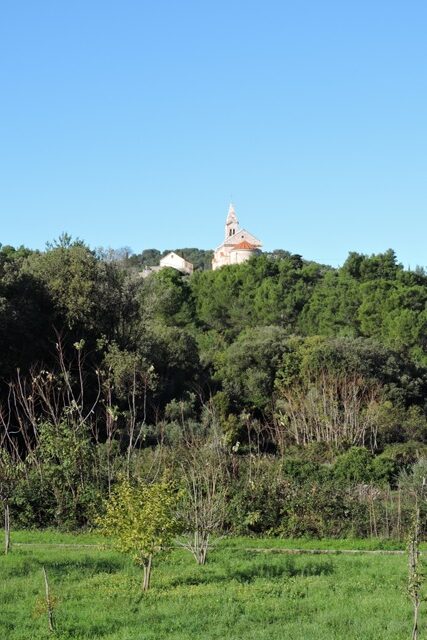
Apparently it is no longer the done thing to have “New Year resolutions”. That’s OK then, because I didn’t make any this year anyway!
But that doesn’t mean that I haven’t set myself some objectives.
I have, but my objectives are a little more fuzzy than resolutions. This means that I will get hung up about whether I’m keeping them, or not!
We have had a warm week for this time of the year and after a damp December, it has been dry.
The first week of January is usually the coldest week of the winter, according to my weather station average charts. However as you can see, we are well above the average.

This doesn’t mean that we will not get some cold weather later, but every warm day between now and the middle of February means one less day of winter.
This is usually the week to ten days when I have a fire in the wood stove 24/7. However I have not even been lighting the fire until 4pm or later each day.
Even then, this has only been so that the central heating takes away any evening chill.
With severe cold dropping out of the arctic into North America, and in doing so, altering the course of the jet stream, what the rest of the winter holds is anyone’s guess.
Bouldery building
If a rockery is made using rocks and stones, then a “Bouldery” must be made using boulders.
Towards the bottom of the Top Orchard things have grown somewhat. This orchard has the best soil on my land and is also probably more moist than others.
When I bought my home, this was where the goats and chickens had been corralled, so the land has been “well fertilised”.
There are some established trees, an old plum, a younger plum, an olive which has seen better days and a very sweet apple.
In addition I have planted a dozen fruit trees and have some more to go in once I have prepared the ground.
I planted them on the principle that fruit tree saplings can take from between three and five years to start producing fruit after planting.
So while I have been getting on with all the renovations to my buildings, the saplings have been doing their own thing.
However that does mean though that ‘out of sight’ is often ‘out of mind’.
I was a little surprised when I started clearing brambles at the end pf the orchard this week, just how thick they had grown. In places they were taking up almost a metre width.
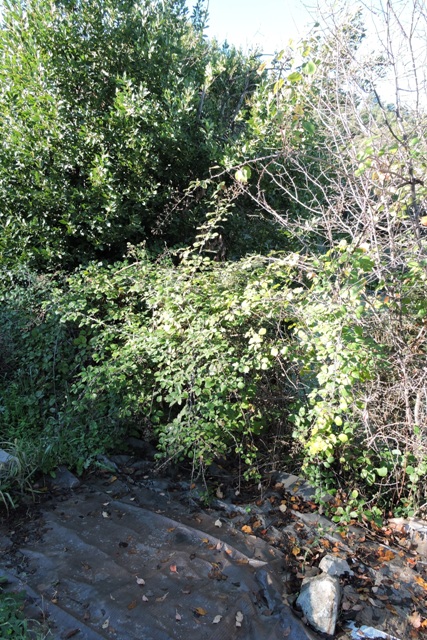
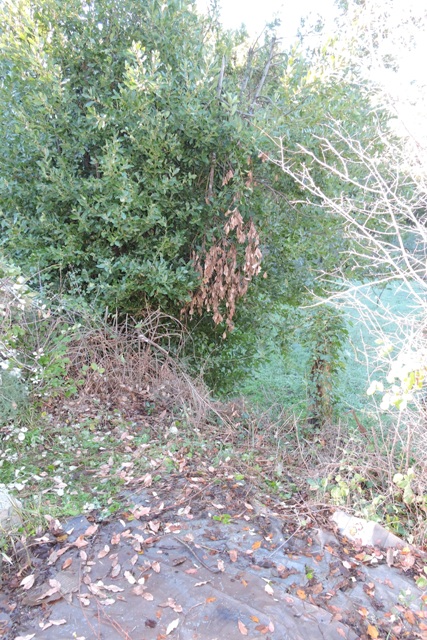
I have a number of plants in the nursery that I want to set out in their final positions, but I need some walling to hold the soil back. So I have been moving small boulders into place.
One thing I am not short of is stone. In the architectural salvage area, there are stacks of various sizes of stones. These are all stones that I have recovered as I dismantled the old buildings.
Rather like Topsy, the stacks have grown over time as I have dismantled more and more.
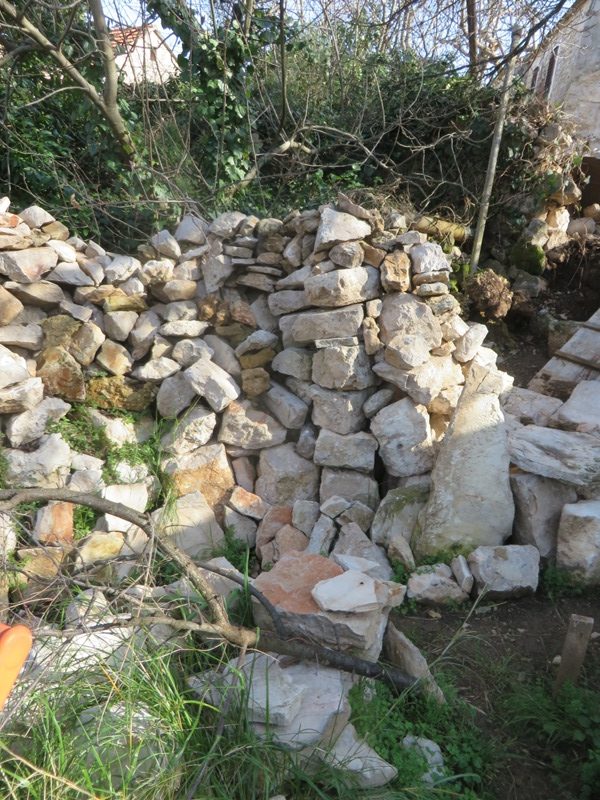
The very largest stones are piled only two high. This is because I cannot lift them higher. To get these into place, I have been rolling them down the orchard.
Rolling the stones downslope is easier than trying to get them into a wheelbarrow or onto the sack barrow.
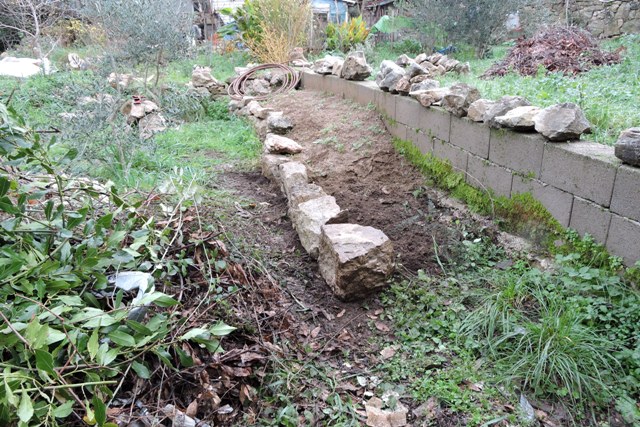
By then end of the week, I have finished the line of stones which runs along the length of the orchard. The next row will run across the bottom.
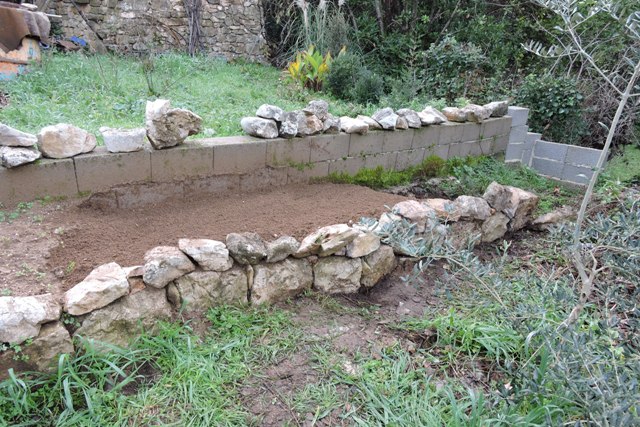
However before I start in the new direction, I need to put some concrete footings in and also move some more riddled and recovered soil.
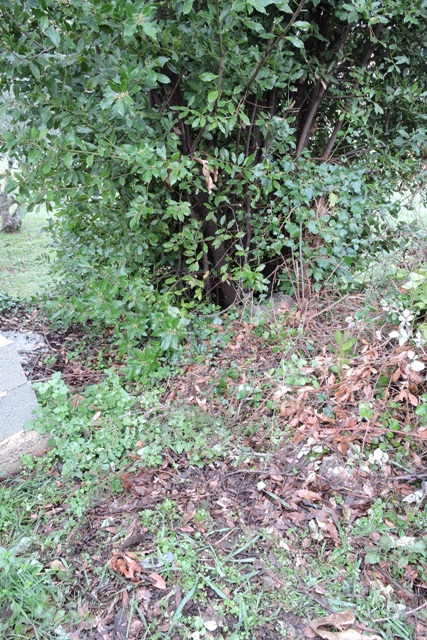
Filling cavities
Although the weather has been perfect for working outside this week, I have also done a little bit of work in the cottage as well.
The walls are now all completely dry, all the damp patches having slowly dried out.
All the walls have now had their first coat of undercoat. However this showed up where there were some gaps around electrical and water fittings.
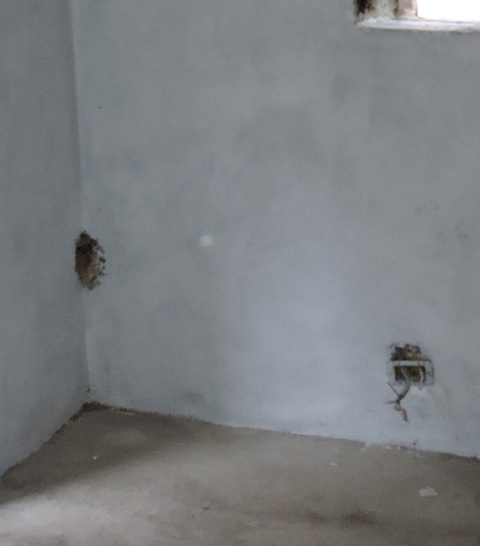
One afternoon I mixed up a batch of mortar and went round carefully filling in all the gaps.
There was one cavity in particular which took a bit of doing.
This was where there had been a hitching stone for a goat or donkey, which protruded from the corner into the room.
I had removed the protruding stone but this had left a large hole. I filled it with small stones finishing off with smooth mortar.
The following morning, before the new mortar dried completely, I went round and sponged the surfaces, so the new patches match the rest of the walls.
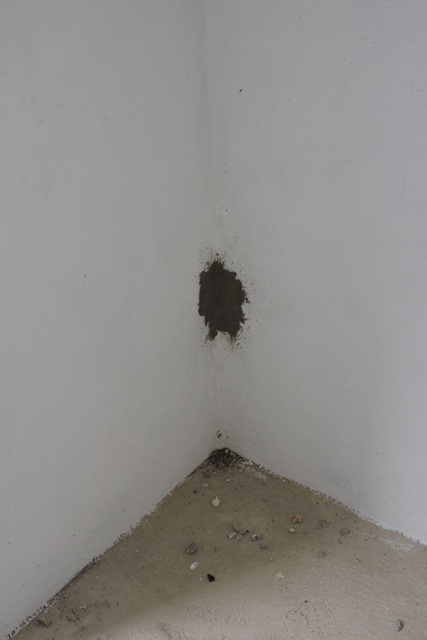
Finally on Saturday, I went over each of the repairs with a small paintbrush.
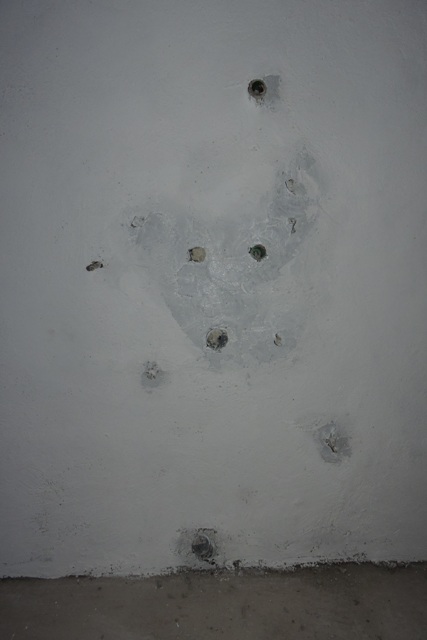
All the walls are now ready for their second and then final coat of paint. Once this has been done, I will start tiling the floor.
De-wilding the rewilding
There is a considerable ongoing debate in the UK at the moment, following BREXIT, about government subsidies for farmers to “rewild” some of their land.
There is a European Rewilding movement that is promoting rewilding to encourage the return of scarce native species.
In many places field sizes have increased as hedges were removed and ditches have been filled in. At the same time agricultural machines have grown ever larger.
Rewilding is about encouraging native species to return by recreating their natural habitats.
I have a huge range of plant and insect life in and around my home. There is a good selection of bird life too.
However because of the historic local hunting of small birds for food, the birds are considerably less tame than they are in the UK.
To the north of my workshop I have a strip of land some four meters wide, which abuts my neighbours. This is where over the decades all manner of rubbish has been dumped.
With more than enough to do else where, I have left this plot to its own devices, with the result that it is an impenetrable mass of ivy, fig, pomegranate, wild asparagus and young self sown weed tree saplings.
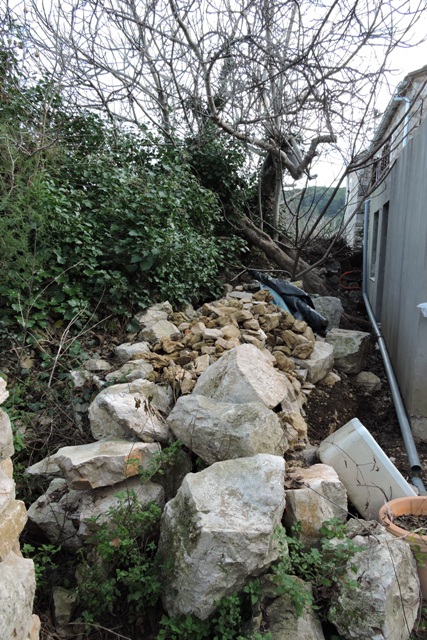
I cannot even see any of the boundary stones which separate my land from my neighbours. However my neighbour has said that he wants to clear it.
I would be very happy to do the same, but it will be neither an easy nor quick task.
What I would like to do is to continue the boundary wall which already exists further along my plot. Then I’ll also extend my curved dry stone wall to my boundary.
This project would then use most if not all of the stones which I have in the architectural salvage area.
There will be a lot of soil to be recovered as well and as this has years, if not decades of leaves and vegetable matter in it, it will probably be good soil too.
Good soil is something I lack. I celebrate finding even a single worm!
I’ve made a start this week by cutting some of the sprawling and unproductive limbs of the fig trees and the pomegranate, before the sap starts to rise.
It did feel as though I was de-wilding an area which has become overgrown.
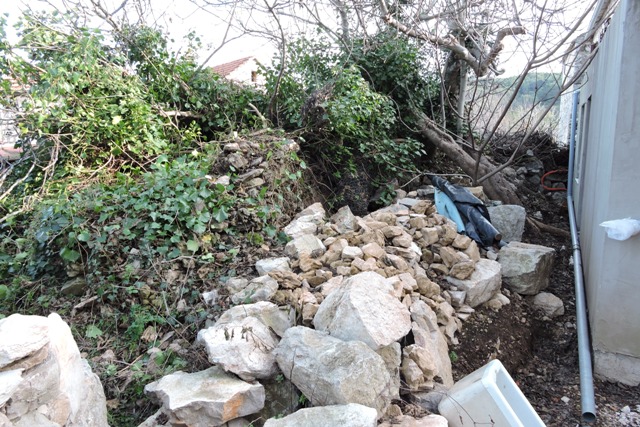
However for every tree I remove, I’ll be planting two more and I want to diversify into many different plants and shrubs here, to offer a more diverse wildlife habitat.
Before I can do soil recovery…
It may not seem so to a casual reader, but I have a master plan which I am following.
It is the plan which I started with when I moved in. Albeit in the light of experience, I have made a few adjustments. However there are really not that many changes.
One of my objectives for this year is to make significant progress with the orchards and gardens.
I have not given up on getting the planning approval for my buildings, but I recognise that here it is just a VERY slow, bureaucratic and frustrating process.
So while I continue to work on the insides of various buildings, I am determined to make significant progress outside this spring. This is so I will really be able to enjoy my outdoor spaces this summer.
After creating the Bouldery wall to hold back the soil, I then installed underground irrigation. This will be an automated system.

Then I looked at my inventory of plants which are in the nursery and selected those which will thrive in full sun.
Anticipating some rain on Thursday (it didn’t happen) I planted several species. Things like wild Gladioli, Acer Palmatum “butterfly”, a Corkscrew Hazel, Alstromera and a Buddleja “Sungold”.
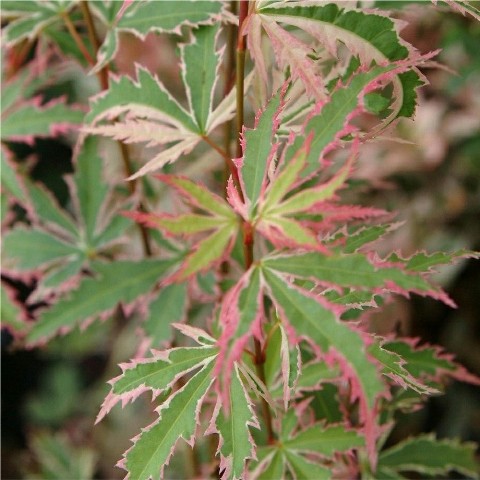

These have all been grown on in large pots. So they have quite substantial root balls which should make them adapt quickly to their permanent position.
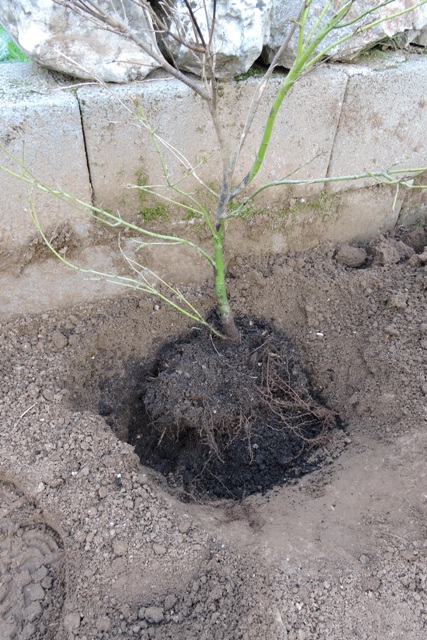
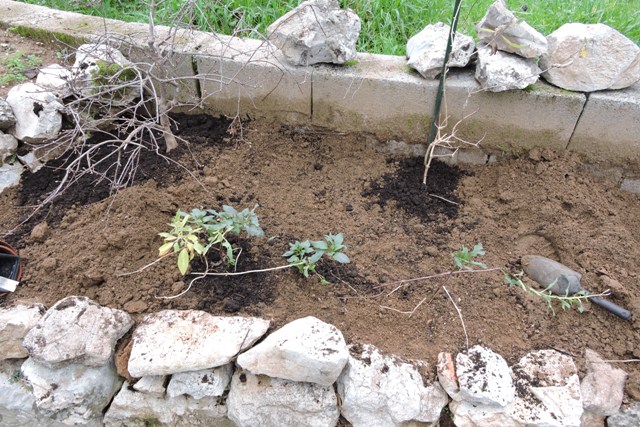
Several are already showing their first buds. And of course I was helped by the felines who like the soft, riddled soil.
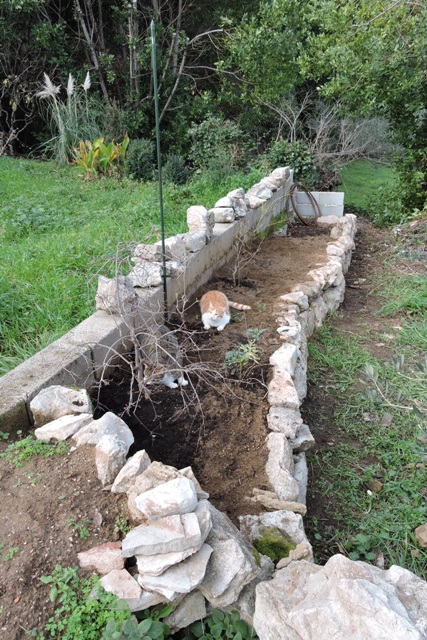
With more plants to go in, I urgently need more reclaimed soil to fill in behind the boulders.
Having done the de-wilding, on Saturday morning I was out in the warm sunshine, moving small stones ready for removal, and stacking more stones I will keep for the new wall.
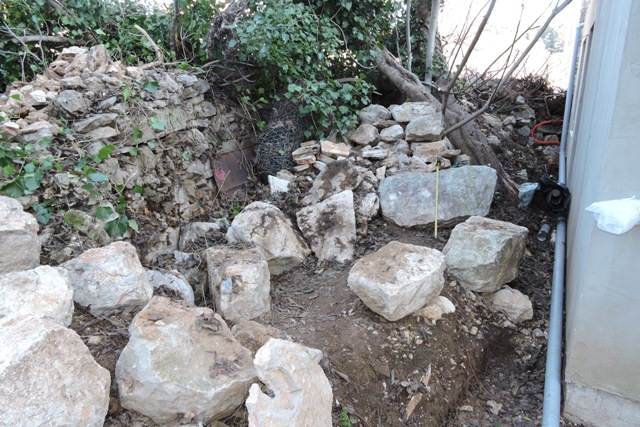
There are more boulders here too. When I look at a stone measuring 120 cm x 50 cm x 60 cm and weighing probably upwards of a quarter tonne, I simply can’t imagine how the old time builders moved these monoliths without mechanical aids.
I have enough to build my own ancient stone circle!
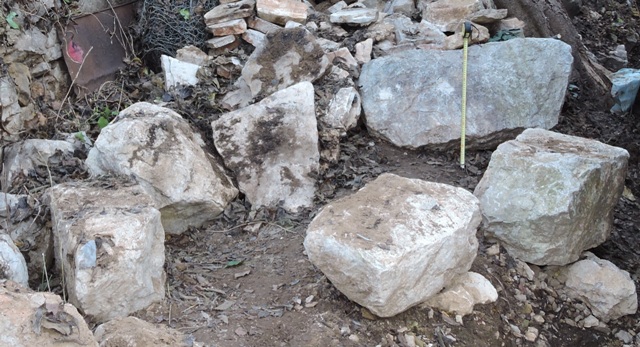
These will form the base of the dry stone wall extension. But for now I just want to recover the good soil from this old fold yard and reuse it.
I’m ready now to start afresh on Monday morning! NCG
3 Responses
Marcy Fletchall
Norman, another great blog. I especially like the pictures of the new plants you have put out.
Your weather looks accommodating. Here, we had a few inches of snow, and the next day it was 62F. And it’s warm today again. The snow helped put out the Boulder fire which was a good thing. We expect warm weather for at least another 3 weeks.
Thanks as always for sharing.
Tony Griggs
If it’s any consolation Norman, we are experiencing wet cool weather here on the 40th parallel south on Flinders Island. Low 20’s daily temp. Kind of like an English summer! Mind you we are not complaining. After 7 years in Abu Dhabi, we treasure “cool” days now!
Les Bennett
Always interesting Norman, the hard work is paying off 👍